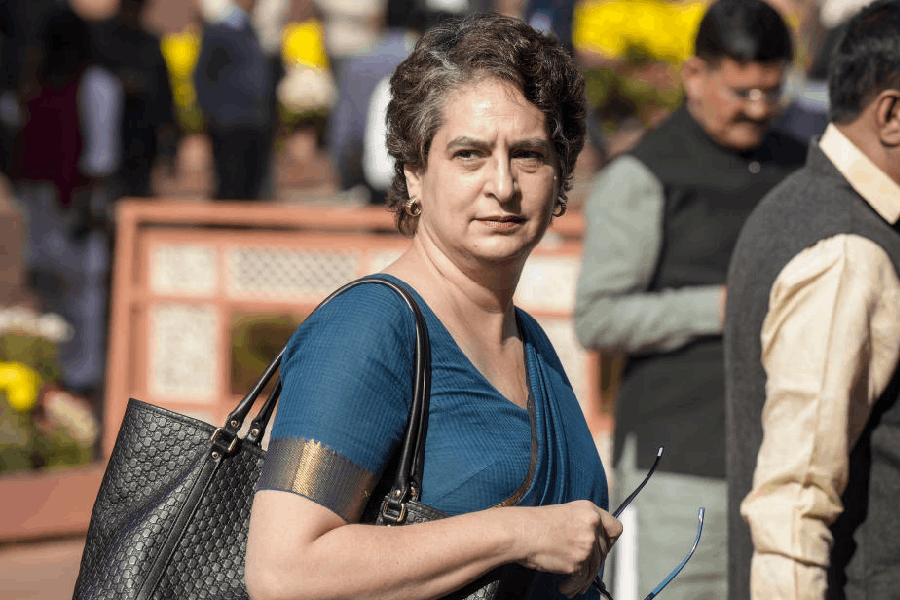-
.jpg)
If the weather's right you can enjoy spectacular dawn views of the Himalayas, and also the Nanda Devi, Trishul, Panchuli and Nanda Kot peaks (below), from Ramgarh
It was not a great way to start our trip. As my suitcase went through the scanner at Delhi's Anand Vihar railway station, the burly policeman turned and pointed accusingly at the bottle of red wine I'd tucked away between a sweater and my sister's woollen cap. He said in a reproving tone: 'Now if you ladies do this, how will it work?'
'But what's the problem?' I retorted, as my five-year-old daughter tugged at my shirt nervously. 'Is drinking wine a good thing? Don't you have any 'gents' with you?' he replied. At this point my sister took a shot at damage control. 'Sirji, this is for the retired brigadier we know in Ramgarh,' she said. 'Ok... but don't give it to anyone on the way,' he said, relenting.
We made it on board the 6am Shatabdi Express to Kathgodam in Nainital district, Uttarakhand without further misadventure. Our final destination was Ramgarh.
Crisp, cold mountain air greeted us at the quaint Kathgodam station. We bundled our two toddlers into a taxi and set off for the next part of the trip. Situated at a height of about 7,000ft, Ramgarh is a small town that can't really be called a tourist destination. It usually features in the 'nearby places to visit' category for those visiting the more popular — and populated — Nainital and Bhimtal.
It is this off-the-beaten-track appeal that sets Ramgarh apart from other hill stations and their Mall Roads, wooden artefacts, video parlours and fast-food stalls. Yes, there are 'apartments for sale', and hotels on the hillsides, but those are easy to ignore when you concentrate on the unobstructed views of the Himalayan beauties — Nanda Devi, Trishul, Panchachuli, Pindari Glacier, Nandakot, Nandaghunti and Mount Kamet.
Or, perhaps I should say that's what you can see theoretically. I didn't get to see the stunning mountain ranges because it was clouded over for the two days we stayed there. We kept praying for snowfall though, for the sake of the kids whose idea of snow is 'the stuff that collects on the inside of old refrigerators'. But it didn't snow either. And yet, I would cheerfully return to Ramgarh.
-
.jpg)
A few slate slabs are strewn about a tree, perhaps marking the spot where Tagore sat and wrote poems. Pic by Prerna Raturi.
One reason for that is Soulitude, a lovely holiday home in Gagar, Ramgarh. Initially built as a getaway for its owner, Manish Chandra, and his friends, Soulitude now takes guests, although the marketing is selective and there are no deals offered through travel portals or agents. The property gives you a 180 view of the stunning Kumaon Himalayas. And of course, there is food, glorious food — everything from Indian and Chinese to continental and Italian. Fresh produce is from Chandra's organic farm nearby.
My first discovery in the course of exploring Ramgarh was the summerhouse of famous Hindi writer Mahadevi Verma. The house has now been converted into a museum that has her manuscripts, oil paintings, and other things like her writing desk, pots and pans and so on. It's a treasure trove for Hindi literature lovers and also has a library with a wide collection of works by other Hindi writers.
But what took my breath away, (and the other reason for my promise to return), was Tagore Top. As the name suggests it's the place where Rabindranath Tagore lived for a few months in 1903 — though the building doesn't exist anymore. I made it there with some difficulty, huffing and puffing all the way through a light drizzle and fog up to 8,200 ft.
-
.jpg)
The quaint and pristine Ramgarh valley is still relatively free of touristy trappings
Luckily for me, when we reached the top, the curtain of fog parted for a few minutes for me to take in stunning views of the Ramgarh Valley and glimpses of Bhimtal glinting in the sun like a mirror flung far down the hills.
Local sources say that the Nobel Laureate visited Ramgarh in May, 1903, with his son Samindranath and his daughter Renuka, who had contracted tuberculosis. The doctors had prescribed clean, fresh air for her health. It's also said that Tagore wrote poems for his collection, Shishu, here. And while Tagore was moved by the beauty of the Kumaon mountains, his daughter's health, sadly, failed to improve and the poet took his children back to Bengal. Renuka died the same year in September.
-

Map by Nilratan Maity. Not to scale
Up on the hilltop, are a few large, flat stones around an old oak tree that point to where Tagore might have sat amid the forest. Tagore returned to Ramgarh again in 1914, but stayed in a cottage closer to the town, which is now a Neemrana property.
At Tagore Top, all that's left now are the stones from the old house that are scattered around a concrete monstrosity. In its infinite wisdom, the state government decided to commemorate Tagore's time in the hills here with a half-constructed building that stands out only because of how ugly it is. Wild bushes and plants hug window ledges and peek through doorways. Far, far away from habitation, Tagore Top is a quiet place, with only the sound of wind whispering to the trees, and the mist playfully dodging between woods. Who wouldn't want to go back?
TRAVEL LOG
Getting there: Fly from Delhi to Pantnagar, a two-and-a-half hour drive from Ramgarh. Or take a train from Delhi to Kathgodam station, which is a two-hour drive away.
Staying there: For rooms at Soulitude, log on to www.soulitude.in. Neemrana’s Ramgarh Bungalows are another option.

.jpg)
.jpg)









